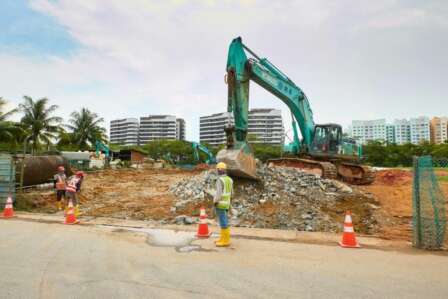Snapshot of Public Enterprises of Nepal
Introduction
Public Enterprise (PEs) is an organization which is owned, managed and controlled by government for the welfare of public. It is established in Nepal mainly for providing basic goods and services with ease in access to the public at a reasonable price while maintaining a healthy competition in the delivery of such goods and services. PEs have been playing an important role in controlling the market monopoly, reducing artificial shortage, fair distribution of essential goods and services as well as expanding access to financial facilities. Government of Nepal has been establishing and managing PEs in public utility, business, service, industry, social utility and financial sector.
Rationale of Public Enterprises
PEs have been established to serve Infrastructural facilities and service, basic consumer and development goods, adequate supplies of essential goods, managerial support to needy enterprises, and entrepreneurial support to needy enterprises. Generally, the rationale of PEs in Nepal was as mentioned below:
- Private sector was weak in both capital and know how (technical as well as managerial) and government initiation was vital to enhance economic activities.
- Donor countries and agencies, particularly China and former USSR, were much interested to invest in several enterprises, hence PEs were established to utilize these resources.
- Additional return was expected from government investment in productive sector which was essential to mobilize other priority and backward areas.
- Government was responsible to prevent private sector exploit general public by charging monopoly price and rendering low quality and quantity of goods and services.
- Slogan of socialism, mainly in the post war era, was popular in the developing countries including Nepal though Nepal’s constitution has not incorporated the doctrine of socialism as has been the case in other countries.
- Being newly independent from the domestic oligarchic rulers, the new political leadership aspired for providing the basic economic services through the public sector with the pious objective of alleviating the poverty of the people and improving the underdeveloped conditions of the country.
Current Situation of PEs in Nepal is Shown Below
After the restoration of democracy in Nepal, PEs were established alongside the initiation of strategic development plan. The highest number of PEs had reached at 62 by the end of Seventh Plan. With the emergence of open economy, the policy for the operation and management of PEs on competitive and professional basis was adopted in order to internalize the changing concept of PE management. According to this concept, 30 PEs that were not being able to be competitive as well as not in government priority were divested.
As of today, there are a total of 44 PEs in existence: 10 PEs in Industrial Sector, 5 PEs in Trading Sector, 10 PEs in Services Sector, 5 PEs in Social Sector, 5 PEs in Public Utility Sector and 9 PEs are in Financial Sector. Out of them, only 42 PEs are currently in operation. As per the details of PEs as on 2079 Asar end, formation of PEs as per company Act is 33, as per special Act it is 7, As per Sanchar Sansthan Ain it is 2, as per Sahakari Sansthan Ain it is 1 and as per Sansthan Ain it is 1. Though legally exist, Janakpur Cigarette Factory, Butwal Spinning Mills Ltd., Nepal Engineering Consultancy Service Center Ltd. and National Trading Company Ltd. are not doing any businesses or commercial activities. Metal Company Ltd. has not yet to come into operation.
The commercial business of Nepal Railway Company Ltd. has not yet started because the construction of a new railway track is in progress. Dhaubadi Falam Company Ltd. and Nepal Infrastructure Company Ltd. are two new PEs added to the list of PEs in Nepal in the fiscal year 2019-2020. At the very outset of incorporation, most of the PEs had monopoly but in the subsequent years they failed to continue. Of late, the establishment of new PEs has come in line with government’s policy priority to invest in the areas of Hydro power production and transmission line, construction of public infrastructure and expansion of industrial districts.
In the last few years, the number of employees in PEs is in declining trend. The number of employees has declined because of the use of modern technologies, cut of the staff especially in Public Utility and Financial Sector. In addition, the number is decreasing as some PEs are closed and some PEs have no regular plan of recruitment as well as a practice of lengthy process of recruitment. However, due to the involvement of Lok sewa aayog in acquisition and career growth of employee of all the PEs, there is assurance of fair selection in acquisition, recruitment and maintenance of employees though some disparities can be found in providing financial incentives among PEs.
Among all PEs in operation, the top five highest profit-making PEs in the fiscal year 2078/79 are Nepal Electricity Authority, Nepal Doorsanchar Company Ltd., Rastriya Banijya Bank Ltd., Citizen’s Investment Trust and Deposit and Credit Guarantee Fund. 5 PEs including Gorkhapatra, Krishi Samagri Co. Ltd., Sanskritik Sansthan were given subsidies by GON. As per the annual status review of PEs 2080, GON, Ministry of Finance, in comparison with FY 2077/78 and FY 2078/79, paid up capital, shareholders net worth, net earning, reserve, investments etc. are increased in FY 2078/79 than that of FY 2077/78. Whereas, debt, tax management (current and deferred), debt equity ratio etc. are decreased in FY 2078/79.
No. of PEs that completed their audit status till correspondence FY in 2078/79 is 21, Number of net profit earning PEs is 25, Number of PEs that are operating in loss is 17, number of PEs that were closed/ not in operation is 2, PEs with accumulated profit is 20, PEs with accumulated loss is 19. Whereas, total number of employees is 29,736.
In the absence of regular audit of some PEs, its fairly difficult to make an accurate assessment of financial situations.
Challenges of PEs in Current Scenario
Basic goal of PEs is providing goods and services at reasonable cost, creation of employment opportunities, creation of socio-economic infrastructure and finally make contribution in national development. Some challenges that are hindering in managing PEs are mentioned below:
- Structural rigidities: Working on behalf of government ownership and control, PEs are not completely business oriented and it’ s principle of market management is not applicable. The goal of PEs is not attaining profit but to provide basic service delivery at fair price. However, there is a challenge for the fulfillment of social responsibility considering government policies as major focus. PE’s are unable to make timely decision, unable to picturize proper cost benefit analysis for determining the price, due to which organizational objective and policy of government are mismatched resulting in lack of effectiveness.
- Organizational aspect: Government is unable to make regulatory institute for all the PEs. There is dual role of concerned ministry and ministry of finance in operation and management. It lacks organizational ownership of concerned ministry. Lack of corporate governance is another major thing seen as a problem in PEs. PE are not fully responsible to the government. Due to dual ownership and control process PEs lacks unified control and responsibility system. They are unable to make performance evaluation of PEs by one responsible ministry.
- Managerial aspect: Structure of maximum PEs is weighty and there is weak performance evaluation and management system. PEs are unable to follow agile, correct, transparent and techno friendly principles. PE lacks better management of expertized knowledge, skills and potential. Incompetent employees due to lack of training and development programs, research-based findings to tackle current market need, delay in enrollment procedures, weak corporate governance and accountability, existence of status quo practices, weak internal control and administration are the few factors that are lagging PEs left behind the competitive world.
- Business aspect: Most PEs are not able to follow basic business fundamentals like formation of long-term strategic plans and planned development practice. They are not able to use Information and communication technology at desired level. Ineffective monitoring and inspection of performance appraisal is another factor that is drowning organizations. Proper execution of plans and programs adhering to government’s priority could have changed the situation. That would eventually help in forming detailed market plan, following market rules and tactics, developing competency and being responsible towards government, stakeholders and consumers at large.
- Financial efficiency and responsibility aspect: Accounting, auditing, General meetings, Annual reporting, Internal control based on good corporate governance practices, Accountable and efficient financial transactions make an organization robust and trustworthy. However, very few PEs comply with NFRS standards. Only few of them are doing regular and timely auditing. One fourth of PEs are still in loss. They are unable to pay principal and interest, debts are increasing day by day. Apart from these things, COVID-19 pandemic, Russia Ukraine war and global commodity price shocks have weakened PEs financial situations.
Excessive political interferences, lack of adequate autonomy and accountability, absence of professionalism, rampant financial indiscipline and conflicting goals have been the main reasons responsible for the dismissal of performance of PEs in Nepal. PEs operate under various legal and regulatory frameworks and in different market settings. They have been formed under different Acts, 33 PEs were established under the Companies Act, the others are established under various special Acts, Cooperative ACT, OR Corporation Act. The daily and managerial operations of PEs are governed by various rules and laws. These rigidities have created some chaotic environment in PEs.
Way out
Governments fundamental priority like providing reasonable cost of goods and services, prioritization of deprived sector, reduction in poverty and inequality can be effectively addressed through proper execution of PEs in various ways as mentioned below:
- Establishment of regulatory body in PEs for those who doesn’t have regulatory body. This gives a clear framework to work upon organizational policies and procedures. This also makes organization autonomous and helps in better coordination with organizational management, board and government to give expected results.
- Policy reform through umbrella Act enhances competency through clear guidelines and manuals to conduct organizational performances in an effective way. This will result in no intervention by outsiders and makes the organization autonomous to exercise rights for organizational benefits.
- Effective and proactive board of directors, audit committee, internal audit and internal control system makes responsible PEs.
- By restructuring as per changed federal structure, effective performance evaluation system, managerial skill enhancement, effective communication, enhancement of information and communication technology and adhering to financial discipline, we can make positive impact on managerial aspects of PEs.
- It is imperative to restructure PEs based on need, relevancy and nature of work. There is also a need to continue implementing the policy of merger and acquisition of PEs that correspond to the same objective and similar nature as well as the policy of unbundling of large enterprises for job specification. Hiring strategic partner can be another way out.
- It is important to right-size employees by conducting new organization and management (O &M) surveys in terms of business plan and workload of PEs. PEs need to adopt the policy of linking employees’ performance with career development through clear job description and performance indicators.
- There should be a clear provision of exit policy for financially unviable PEs, closed PEs and sick PEs. For this, there is a responsibility for government to adopt an important mechanism and method to use land, building, machinery and tools as well as to protect documents of dissolved PEs.
- Competency and quality service delivery assurance by using total quality management concept can be another factor.
- Assurance of justice and social responsibility toward citizens can bring positive attitude and hope to bring out positive changes in the nation.
- Production and distribution of goods and services in terms of durability to mobilize different sector of an economy.
Given the role of public enterprises in the implementation of fundamental rights and directive principles enshrined in the Constitution of Nepal as well as various policies, periodic plans and annual policies and programs of government, PEs appear still relevant today. In order to enhance the level of performance through necessary improvement of PEs, it is important to set a clear and objective modality of investment and policy of operating them in the coming days. Some of them are to be restructured based on similar nature of work delivery, formulation of unified law is to be prepared for effective monitoring and execution, minimum performance criteria are to be set and reviewed it annually, implementation of NFRS standard is to be made to maintain financial discipline. Another major thing is to shift the focus on maintaining good governance.
References
Ministry Of Finance (mof.gov.np)
https://www.nrb.org.np/er-article/performance-of-public-enterprises-in-nepal/
https://nepalindata.com/resource/ANNUAL-PERFORMANCE-REVIEW-OF-PUBLIC-ENTERPRISE-2018/
https://www.mof.gov.np/uploads/document/file/1685280975_Yellow%20Book%20BIG%202080%20Final.pdf




